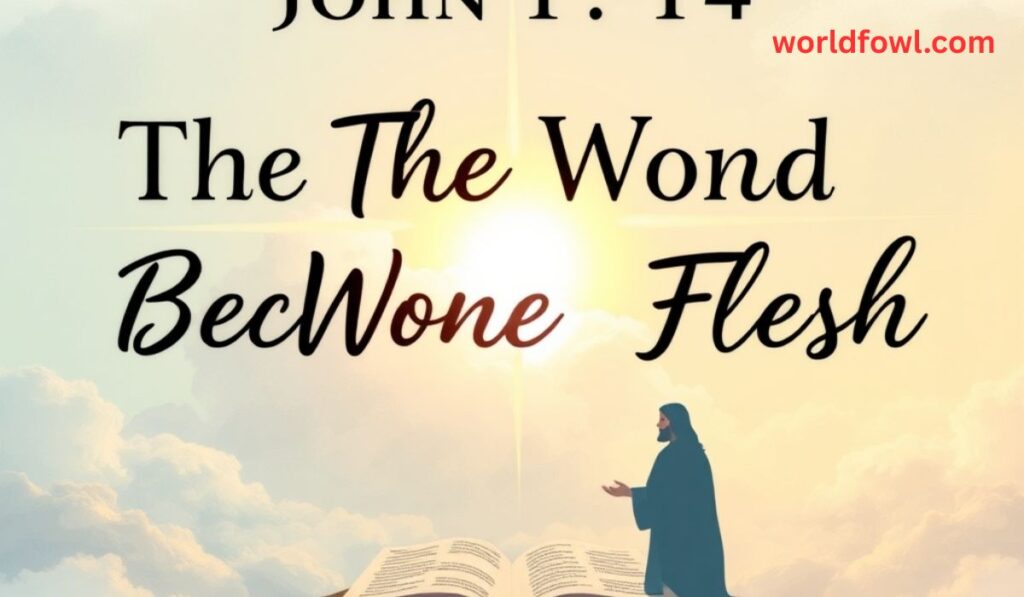The top 7 bible verses about the trinity highlight how Scripture reveals God as one in essence yet expressed through the Father, the Son, and the Holy Spirit. These verses form a foundational guide for understanding the divine unity that shapes Christian belief. Studying the top 7 bible verses about the trinity deepens appreciation for God’s nature.
This collection creates a compelling path that draws readers into the richness of biblical truth. Each passage in the top 7 bible verses about the trinity offers clarity and depth that strengthens faith and encourages reflection.
Exploring the top 7 bible verses about the trinity provides powerful insight into how God works in perfect harmony. These carefully selected scriptures show why the top 7 bible verses about the trinity continue to inspire believers around the world.
Understanding the Trinity Before We Dive In
Let’s establish what we mean by Trinity theology. The Christian doctrine teaches that God exists as one divine being in three distinct persons. Not three gods. Not one person wearing different masks.
Think of it this way: The essence of God is singular. His personhood is plural.
The Father is fully God. Jesus Christ possesses complete deity. The Holy Spirit’s role isn’t secondary or created. Each person shares the same divine nature yet maintains distinct identity.
Here’s what the Trinity isn’t:
- Tritheism: Three separate gods working together
- Modalism: One person appearing in three different modes
- Arianism: Jesus as a created being, not fully divine
- Subordinationism: The Son or Spirit being lesser in essence
The early church didn’t invent this doctrine of the Trinity. They discovered it in Scripture. When they studied the New Testament Trinity verses alongside Old Testament hints of the Trinity, a pattern emerged.
God reveals Himself as one. Yet three persons appear throughout salvation history. The Godhead operates in perfect unity while maintaining distinction.
Now let’s examine seven passages that illuminate this mystery.
Matthew 28:19 – Baptism in Three Names
“Go therefore and make disciples of all nations, baptizing them in the name of the Father and of the Son and of the Holy Spirit.” (Matthew 28:19, ESV)
Jesus spoke these words on a Galilean mountain. His final command before ascending to heaven. The Great Commission would launch Christianity across the globe.
But notice something crucial. Jesus didn’t say “names” (plural). He used the singular “name.” Yet He included three distinct persons: Father Son and Holy Spirit.
This grammatical detail reveals everything about the Trinity. One divine name. Three persons sharing it equally.
The Greek construction emphasizes unity. “Eis to onoma” means “into the name.” When someone gets baptizing in the name of the Father Son and Holy Spirit, they enter relationship with the entire Godhead.
Early Christians recognized this formula’s significance immediately. The Didache (circa 50-120 AD) instructs churches to baptize using these exact words. Church fathers cited this verse repeatedly when defending the deity of Christ and Spirit.
What This Verse Teaches About the Trinity:
| Element | Trinitarian Significance |
|---|---|
| Singular “name” | Unity of divine essence |
| Three persons listed | Distinction of persons |
| Equal grammatical treatment | Co-equality of all three |
| Baptismal context | All three active in salvation |
| Command authority | Jesus’ divine right to command |
The biblical Trinity appears right here in Jesus’ missionary mandate. You can’t separate evangelism from Trinitarian theology. Every new believer enters covenant with all three persons simultaneously.
This proof of the Trinity in the Bible carries apostolic weight. Jesus Himself established the formula. Not Paul. Not a later council. The risen Christ.
John 1:1-14 – The Word Became Flesh

“In the beginning was the Word, and the Word was with God, and the Word was God. He was in the beginning with God. All things were made through him, and without him was not any thing made that was made… And the Word became flesh and dwelt among us.” (John 1:1-3, 14, ESV)
John’s Gospel opens with a theological earthquake. He takes us back before creation itself. “In the beginning was the Word” echoes Genesis 1:1 deliberately.
But who is this Word? Verse 14 makes it unmistakable: Jesus as the eternal Word who took human flesh.
The Greek word “Logos” (Word) carried rich meaning for John’s audience. Jewish readers connected it to God’s creative speech in Genesis. Greek philosophers knew Logos as divine reason ordering the cosmos.
John hijacks both concepts. The Logos isn’t an abstract principle. He’s a person. Jesus’ divinity existed eternally, not beginning at Bethlehem.
The Trinity paradox appears in verse 1’s structure:
- “The Word was with God” (distinct person)
- “The Word was God” (shared divine nature)
How can someone be with God yet be God? Only if the essence of God allows for personal distinctions within the Godhead.
Verse 3 reveals the Son’s role in creation: “All things were made through him.” Paul confirms this in Colossians 1:16. The Father Son Holy Spirit worked together fashioning the universe.
Understanding the Trinity doctrine requires grasping John’s prologue. The incarnation doesn’t mean God changed. It means the eternal Son added humanity to His deity.
Jesus Christ walked dusty Palestinian roads. Yet simultaneously, He sustained every atom in existence. Fully God. Fully man. Second person of the Trinity.
This passage destroys any attempt to diminish Christ’s deity. Ancient heresies tried making Jesus a created being. But “In the beginning was the Word” demolishes that notion. He existed before time began.
John 14:16-17 – Another Helper of the Same Kind
“And I will ask the Father, and he will give you another Helper, to be with you forever, even the Spirit of truth, whom the world cannot receive, because it neither sees him nor knows him. You know him, for he dwells with you and will be in you.” (John 14:16-17, ESV)
Jesus prepared His disciples for His departure. They’d walked with God incarnate for three years. Now He announced He was leaving.
But He wouldn’t abandon them. Another Helper would come.
The Greek word “allos” (another) is crucial. It means “another of the same kind”—not “heteros” (another of a different kind). The Holy Spirit possesses the same divine nature as Jesus.
Think about what Jesus claimed here. He promised to send the Holy Spirit who would permanently indwell believers. Only God can omnipresently inhabit millions of people simultaneously.
The Trinity’s distinct roles emerge clearly:
- The Father sends the Spirit at the Son’s request
- Jesus Christ intercedes and promises the Helper
- The Holy Spirit comes as the permanent divine presence
All three persons cooperate perfectly. Yet each maintains distinct function and identity.
Jesus called the Spirit “Spirit of Truth.” This title connects to Jesus calling Himself “the truth” (John 14:6). Same divine essence. Different person.
The phrase “Holy Spirit sent by the Father” appears in John 14:26. Yet verse 16 says Jesus asks the Father to send Him. Both statements are true. The Spirit proceeds from the Father and the Son.
What does the Bible say about the Trinity regarding the Spirit? That He’s not an impersonal force. He’s the third person of the Godhead. He teaches, comforts, convicts, intercedes, and sanctifies.
Early Christians recognized the Spirit’s deity immediately. When Ananias lied to the Holy Spirit (Acts 5:3), Peter said he’d lied to God (Acts 5:4). No distinction between lying to the Spirit and lying to God.
2 Corinthians 13:14 – Paul’s Trinitarian Benediction

“The grace of the Lord Jesus Christ and the love of God and the fellowship of the Holy Spirit be with you all.” (2 Corinthians 13:14, ESV)
Paul’s blessing closes his most emotionally charged letter. He’d defended his apostleship, confronted sin, and called the Corinthians back to holiness. Now he blessed them.
But this isn’t a casual goodbye. It’s a carefully crafted Trinitarian benediction. The grace of Jesus Christ, the love of God (the Father), and the fellowship of the Holy Spirit.
Each person contributes uniquely to believers’ experience:
| Person | Contribution | Theological Significance |
|---|---|---|
| Jesus Christ | Grace | Unmerited favor through His sacrifice |
| God the Father | Love | Initiating source of redemption |
| Holy Spirit | Fellowship | Intimate communion and presence |
The order varies from Matthew 28:19. Sometimes Scripture lists the Father first. Sometimes the Son. This flexibility proves there’s no hierarchy of essence. The Trinity in Christianity affirms equal deity for all three persons.
“The grace of Jesus Christ” points to His redemptive work. Only Jesus could provide grace because only He bridged the gap between holy God and sinful humanity.
“The love of God” the Father initiated salvation. John 3:16 tells us God loved the world. That divine love drove the entire redemption story.
“The fellowship of the Holy Spirit” (Greek: koinonia) describes intimate participation. The Spirit creates community among believers and unites us to Christ.
The Trinity works in perfect harmony. Each person glorifies the others while accomplishing unique roles.
Genesis 1:26-27 – Plurality in Unity from the Start
“Then God said, ‘Let us make man in our image, after our likeness.’ So God created man in his own image, in the image of God he created him; male and female he created them.” (Genesis 1:26-27, ESV)
Here’s where Old Testament hints of the Trinity get fascinating. God spoke using plural pronouns: “Let us make man.”
Jewish scholars debated this for centuries. Why would the strictly monotheistic Torah use plural language for God?
Three main explanations emerged:
- Royal Plural: Ancient kings sometimes used “we” for themselves
- Angelic Council: God addressing heavenly beings
- Plurality in God: Foreshadowing the Trinity revealed in Christ
The royal plural theory falls flat. Hebrew kings never used it. The angelic council idea contradicts verse 27: “God created” (singular verb). Angels didn’t create humanity. God did.
The Trinitarian reading makes best sense. Especially when you connect it to New Testament Trinity verses.
John 1:3 says all things were made through the Word (Christ). Colossians 1:16 confirms “all things were created through him and for him.” Genesis 1:2 mentions “the Spirit of God hovering over the waters.”
All three persons participated in creation. The Father spoke. The Son (the Word) executed the creative decree. The Spirit brought order from chaos.
“Plurality in God” appears in the very first chapter of Scripture. The unity of God remains uncompromised—verse 27 switches to singular: “God created.” Yet the plural pronouns hint at personal distinctions within the Godhead.
Church fathers like Irenaeus (130-202 AD) and Tertullian (155-220 AD) saw Genesis 1:26 as proof of the Trinity in the Bible. Not conclusive by itself. But unmistakably suggestive when read alongside the fuller revelation in Christ.
The image of God carries Trinitarian implications. Humans reflect our Creator. We’re designed for relationship, community, and love—just like the Triune God who exists in eternal relationship.
Some critics argue this verse doesn’t prove the Trinity. Fair enough. No single verse contains the complete doctrine. But Genesis 1:26 establishes a pattern: the essence of God permits personal plurality.
Colossians 2:9 – Deity’s Fullness Dwelling in Christ
“For in him the whole fullness of deity dwells bodily.” (Colossians 2:9, ESV)
Paul wrote Colossians to combat early heresies diminishing Christ. False teachers claimed Jesus was merely a spiritual intermediary. They denied His full deity of Christ.
Paul’s response? Nuclear-level clarity. “The whole fullness of deity” (Greek: pleroma) dwells in Jesus.
Not partial deity. Not representative deity. Complete, absolute, infinite deity resides in Christ bodily.
The word “pleroma” means totality, fullness, completeness. Paul chose it deliberately. Every divine attribute the Father possesses, the Son possesses equally.
What This Means for the Trinity:
- Jesus is fully God, not 99% God or semi-divine
- The incarnation didn’t dilute deity but added humanity
- Salvation requires a divine Savior—only God can save
- The Triune nature of God includes Christ as co-equal
“Bodily” destroys any notion that Jesus was mere spirit or illusion. The Word became flesh (John 1:14). Physical. Touchable. Historical.
This verse annihilates Arian theology. Arianism (condemned at Nicaea in 325 AD) taught Jesus was the first and greatest creation. Colossians 2:9 makes that impossible. Created beings don’t house the fullness of deity.
How the Trinity works involves the incarnation’s mystery. The Son took human nature without ceasing to be divine. He didn’t empty Himself of deity (though He voluntarily limited its use).
Paul emphasized “dwells” (present tense). The fullness of deity continues residing in the risen, glorified Christ. Jesus didn’t stop being God when He ascended.
Understanding the Trinity doctrine requires recognizing each person’s full deity. The Father is fully God. The Son is fully God. The Spirit is fully God. Yet there’s only one God.
Colossians 2:9 provides ironclad biblical evidence for Christ’s deity. Anyone who diminishes Jesus’ divinity contradicts this verse.
1 Peter 1:2 – The Trinity Orchestrating Salvation

“According to the foreknowledge of God the Father, in the sanctification of the Spirit, for obedience to Jesus Christ and for sprinkling with his blood: May grace and peace be multiplied to you.” (1 Peter 1:2, ESV)
Peter opened his first letter with a Trinitarian explosion. Salvation through the Trinity gets broken down into three coordinated actions.
The Father foreknew. Before creation, He chose believers according to His sovereign purpose. Foreknowledge of God the Father doesn’t mean mere awareness. It means electing love and predetermined plan.
The Son provides obedience and blood. Jesus lived the perfect life we couldn’t live. His obedience to Jesus Christ fulfilled all righteousness. His sacrificial death secured our cleansing.
Here’s the Trinitarian pattern:
| Person | Role in Salvation | Timing |
|---|---|---|
| Father | Plans and elects | Before creation |
| Son | Accomplishes redemption | In history (Calvary) |
| Spirit | Applies salvation | From conversion onward |
Notice how salvation and the Trinity can’t be separated. You can’t have redemption without all three persons participating.
The Father didn’t send the Son reluctantly. The Son didn’t die unwillingly. The Spirit doesn’t apply salvation grudgingly. The Triune God works in perfect harmony pursuing our redemption.
This verse influenced early Christian doctrine significantly. The Apostles’ Creed (circa 140 AD) follows this Trinitarian structure: belief in Father, Son, and Holy Spirit.
1 Peter 1:2 answers the question: “What does the Bible say about the Trinity?” It says all three persons actively cooperate in saving sinners. Each contributes uniquely yet works toward one goal.
The biblical teachings on God here emphasize coordination without confusion. The Father doesn’t sanctify. The Spirit doesn’t shed blood. The Son doesn’t foreknow (as an action of sovereignty). Yet all three persons remain perfectly united.
When Peter wrote about the deity of all three persons, he assumed his audience understood. First-century Christians already worshiped the Father Son Holy Spirit as one God.
How These Verses Work Together
We’ve examined seven powerful Bible verses about the Trinity. Individually, each offers insight. Together, they present overwhelming evidence.
The cumulative weight of Scripture’s witness can’t be ignored:
- Matthew 28:19 shows all three persons sharing one divine name
- John 1:1-14 establishes Christ’s eternal deity and role in creation
- John 14:16-17 reveals the Spirit as “another” divine Helper
- 2 Corinthians 13:14 demonstrates early Trinitarian worship patterns
- Genesis 1:26 hints at plurality within God’s unity
- Colossians 2:9 declares Christ possesses complete deity
- 1 Peter 1:2 shows all three persons coordinating salvation
Old Testament hints of the Trinity blossom into New Testament clarity. What appeared as shadows becomes brilliant light after Christ’s revelation.
The doctrine of the Trinity emerges organically from Scripture. You don’t need to force it. Read the biblical text honestly and the Triune nature of God reveals itself.
Verses supporting the Trinity appear throughout both Testaments. From creation (Genesis 1) to the final blessing (Revelation 22:21), God reveals Himself as three-in-one.
Is the Trinity biblical? Absolutely. The term might not appear, but the reality saturates Scripture. Just like “inerrancy” and “incarnation”—theological terms describing biblical truth.
Common Questions About the Trinity
Why isn’t the word “Trinity” in the Bible?
The term emerged in the late second century from Tertullian. But doctrine doesn’t require explicit terminology. “Inerrancy” isn’t in Scripture either. Neither is “incarnation.” Yet we affirm these truths because the Bible teaches them.
Explanation of the Trinity requires precise language. The early church developed terminology to protect biblical truth from heresy. Words like “Trinity,” “person,” and “essence” helped clarify what the Bible says about God.
Is the Trinity logical or just mysterious?
Both. The Trinity doesn’t violate logic. God isn’t one and three in the same sense (that would contradict). He’s one in essence, three in persons.
Mystery enters because finite minds can’t fully grasp infinite reality. We understand how the Trinity works partially. Complete comprehension awaits heaven.
Why does the Trinity matter practically?
Understanding the Trinity doctrine transforms daily faith:
- Prayer: We pray to the Father, through the Son, by the Spirit’s help
- Worship: We adore all three persons without dividing devotion
- Salvation: We trust the Father’s plan, Son’s sacrifice, Spirit’s power
- Community: The Trinity models perfect relationship and love
- Mission: We participate in the Great Commission invoking Father, Son, Spirit
Trinity theology isn’t abstract. It shapes everything believers do.
How do I explain the Trinity to others?
Start with Scripture. Show the Bible verses about the Trinity we’ve examined. Let God’s Word do the heavy lifting.
Analogies help but always fail somewhere:
- Water (ice, liquid, vapor) suggests modalism
- Egg (shell, white, yolk) implies three parts making a whole
- Sun (star, light, heat) works better but still falls short
The best approach? Admit the mystery while affirming the biblical evidence. We don’t need to explain everything to believe it.
The Trinity reflects God’s infinite nature. Our inability to fully comprehend it confirms we’re dealing with genuine divinity, not human invention.
Embracing the Triune God

We’ve journeyed through seven powerful passages revealing the Trinity. From Jesus’ missionary mandate to Peter’s salvation blueprint, Scripture consistently presents one God in three persons.
The doctrine of the Trinity isn’t peripheral theology. It’s central to Christian faith. Our salvation depends on the Father’s plan, Son’s sacrifice, and Spirit’s application.
The biblical Trinity challenges us to worship more deeply. When you pray, you engage all three persons. When you read Scripture, you encounter the Father’s voice, Son’s revelation, and Spirit’s illumination.
The Father Son Holy Spirit work perfectly together. Never competing. Never confused. Always united in purpose while distinct in person.
Early Christians died defending this truth. Church councils fought heresies attempting to diminish it. Generations of believers confessed it gladly.
Now you’ve seen the proof of the Trinity in the Bible for yourself. Seven verses. Countless implications. One glorious God.
Study these passages deeply. Meditate on them. Let the Triune nature of God transform how you think about faith, salvation, and eternity.
The Trinity isn’t a puzzle to solve. It’s a mystery to embrace. The essence of God exceeds our comprehension. But His self-revelation through Scripture gives us everything we need to worship rightly.
So approach the Father with confidence. Trust the Son completely. Yield to the Spirit daily. You’re in relationship with the eternal, infinite, all-powerful Triune God.
Conclusion
The top 7 bible verses about the trinity give a simple and strong picture of God’s nature. These verses show the Father, the Son, and the Holy Spirit working in perfect unity. Each passage helps you understand how God moves with purpose and love.
By reading the top 7 bible verses about the trinity, you see how the Bible explains God’s character in a powerful way. These scriptures guide your faith and bring clarity to this important truth. They help you grow closer to God with confidence and trust.top 7 bible verses about the trinity.
FAQs
Q1: What is the Trinity in the Bible?
The Trinity means God is one being who exists as the Father, the Son, and the Holy Spirit.
Q2: Are the three persons of the Trinity equal?
Yes, all three persons are fully God, equal in power, authority, and nature.
Q3: Is the word “Trinity” found in the Bible?
No, the word is not in Scripture, but the teaching is shown throughout many verses.
Q4: Why are Trinity verses important?
They help Christians understand God’s character, unity, and the way He works in salvation.
Q5: Do Old Testament verses support the Trinity?
Yes, the Old Testament includes hints of God’s triune nature that the New Testament makes clearer.








